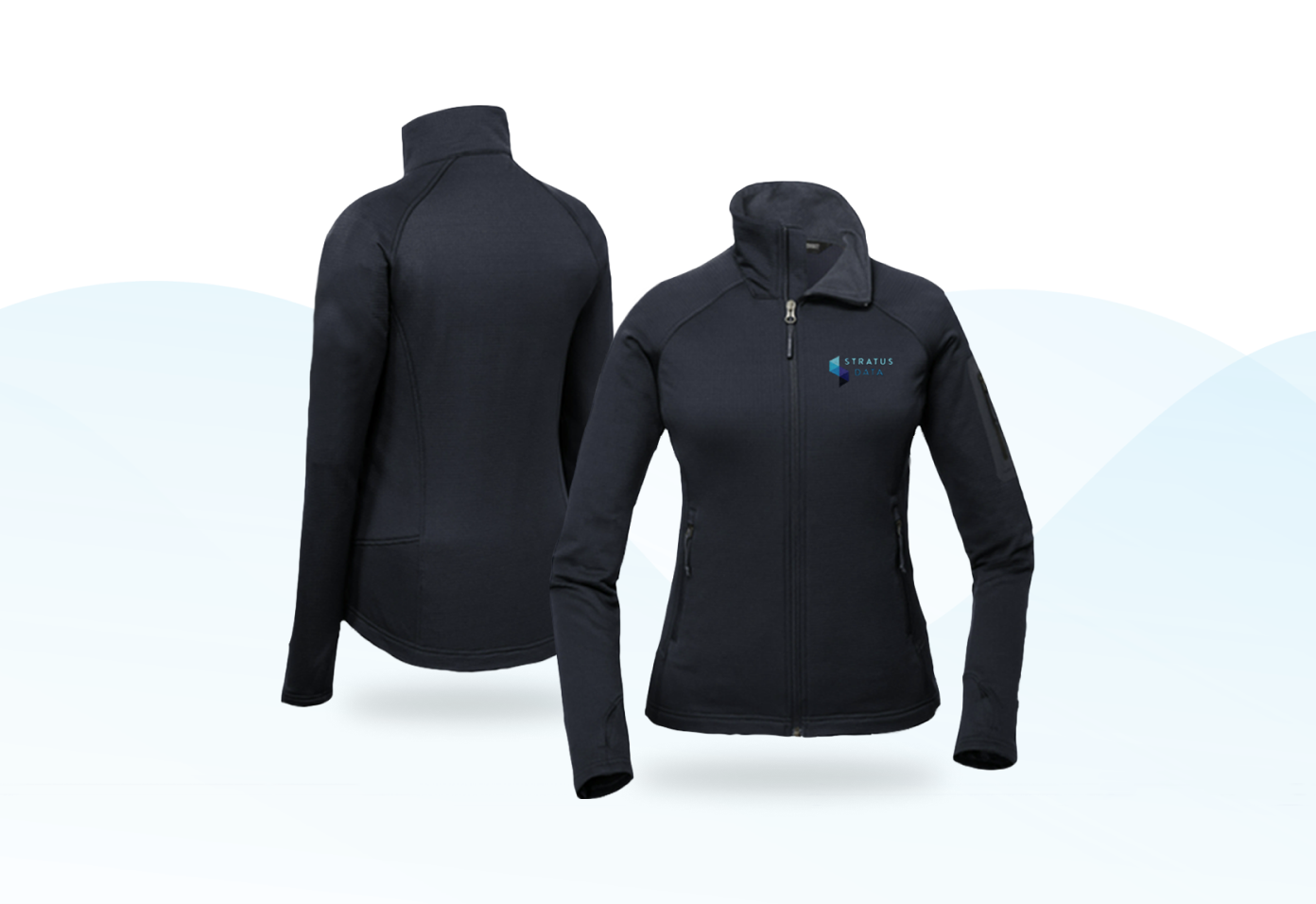“It’s so wonderfully Derek,” says Pensig of the ordeal.
Stratus Data began with only two Founding Partners, Derek Chang and Charles Pensig. But it wasn’t long before a rapidly growing base of clients, teammates, and sundry fans occasioned the need for an official company jacket.
Chang and Pensig selected a sleek full-zip fleece. They sought out a promotional company and sent along the Stratus logo. The company would pick the thread colors, embroider the jackets, and voila. Your favorite Data Science SEAL Team, at your service, in a shining row of fleece.
Just before finalizing the order, Chang requested a sew-out* from the company. And what a sew-out he received. The blues came out green, the indigos bright purple. It might have suited Stratons if Stratons were also mermaids.
The effect was that of a cryptograph on a cryptanalyst. Chang has a background in optics: prior to co-founding Stratus, he completed a Ph.D. on the subject at Stanford University. He contacted the company. They emailed him photos of their threadbook and asked him to eyeball the right colors. They could not know that they were communicating with someone who spent years researching “optical frequency converters for parametric temporal imaging.”**
“Immediately, I could see two opportunities for bias,” says Chang. “The lighting and the camera sensors.”
Next, the company sent him a threadbook in the mail. This eliminated the camera bias. However, the colors on the page changed subtly depending on the light that they were viewed in. Chang asked for the hex codes of the dyes that were bled onto the threads.
“It was a matter of removing one obstacle after another,” he says, “until there were no more obstacles.” His retelling is bright with bona fide enthusiasm. “The hex codes allowed me to make an apples-to-apples comparison on my screen.”
Alas. Apples and apples failed to meet Chang’s standards. Two shades of cyan looked equally like the cyan he wanted. He could pick the darker one—but then should he pick the slightly darker versions of all the colors, or should he pick some slightly lighter versions if they appeared more accurate to his eye? And these were only the dimensions of color that he saw. What might people with selective color-blindness see? People who live in low-light environments like Norway in winter? These latter questions were not discussed in the interview and are an addition at the whim of the writer, though the writer would like to add that it is not unlikely they crossed Chang’s mind.
In the end, Chang turned, as Stratons do, to the numbers. Hex codes are formatted as #RRGGBB—think of these as Red-Green-Blue “coordinates.” Recall the distance formula from your grade-school homework. Chang used this formula to measure the numerical distances between the physical thread colors and the digital logo colors. This way, he was able to calculate which colors were the most objectively accurate counterparts.
Two weeks later, Pensig inquired about the progress of the jackets.
“Well,” said Chang. He proceeded to relay, as if it were common of the average person’s jacket-buying experience, the sequence of removing obstacles one by one.
“He explained it to me,” recounts Pensig, “and my jaw kept dropping to the floor. I thought he was going to take our logo to the company and eyeball a few things. He explained everything and then he asked—if you can believe it—I’ve calculated the minimum distances and come out with a set of colors, but do you think it’s the right answer?”
Four years later, Pensig’s jaw is still dropping to the floor.
“Do you think it’s the right answer?” he says. “That is THE right answer.”
Nowadays, the Stratus jacket can be spotted in various cities across America. Wearers have found success at business lunches and nightclubs; first dates and HIIT workouts. In a world where flashy, ephemeral styles flirt with susceptible wallets, the Stratus jacket stands out for its steadfast and elegant simplicity. A passerby, turning for a second glance, would never suspect the rigor behind the scenes. Rigor supports simplicity. Numbers allow objectivity; math brings forth perfection.
So goes the ethics of Stratus Data. Worn, upheld, and executed with integrity—a style to suit every project.
*A sample of the embroidered logo
**Chang, D, 2014, “Optical-frequency converters for parametric temporal imaging,” PhD thesis, Stanford University, Stanford.
Special thanks to Rachel Grant, Peter Olson, and Logan Leslie for the feedback.
